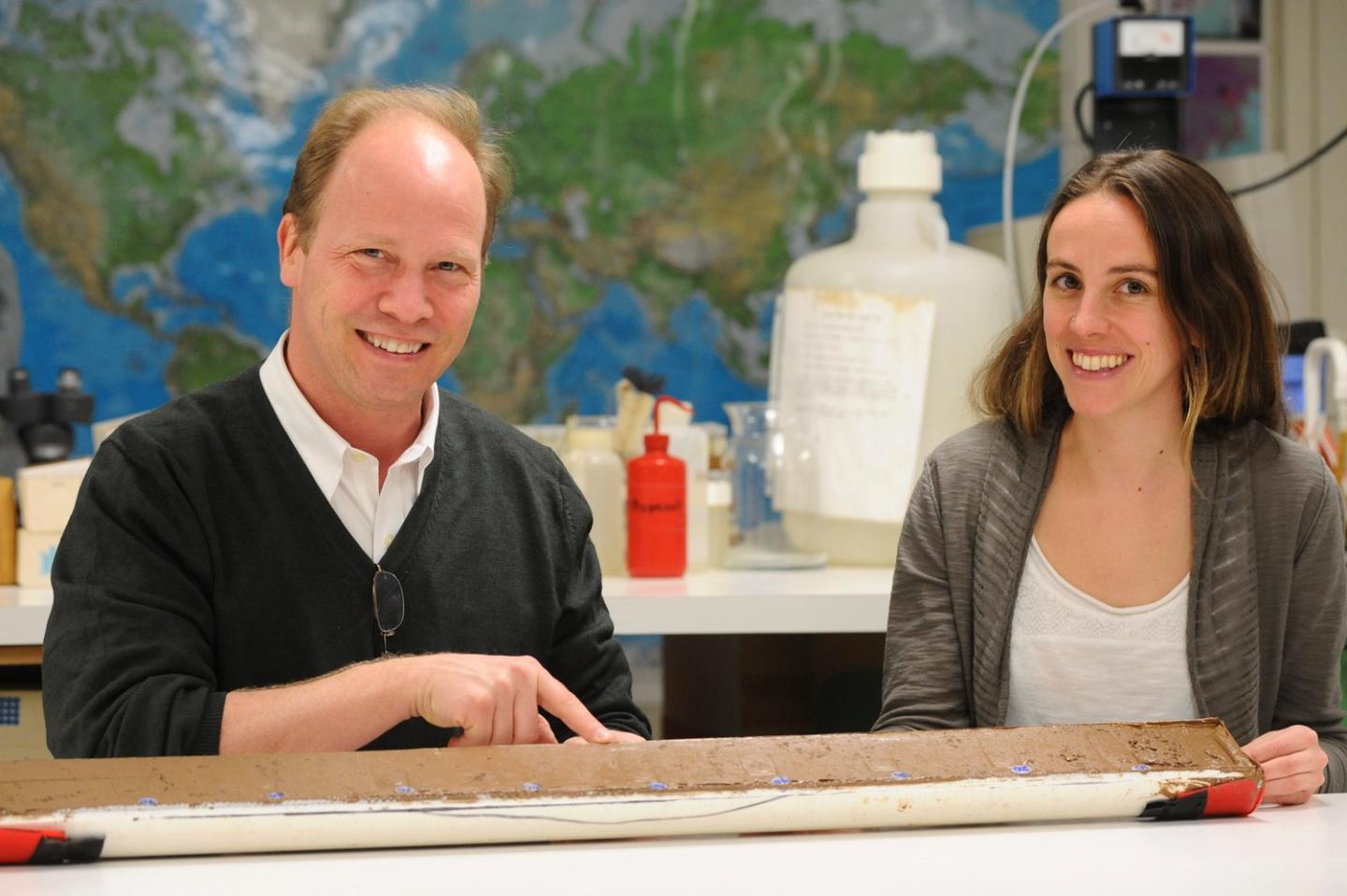The work is more incremental than discovery, the existence of the Green Sahara period was already well-known, but this is a continuous record of the region's rainfall going 25,000 years into the past and it bolsters archaeological evidence which found that humans occupied much of the Sahara during the wet period, but left for about a thousand years around 8,000 years ago. This continuous rainfall record shows a thousand-year period about 8,000 years ago when the Sahara became drier, which coincides with when people left.
"What's interesting is the people who came back after the dry period were different--most raised cattle. That dry period separates two different cultures. Our record provides a climate context for this change in occupation and lifestyle in the western Sahara," says lead author Jessica Tierney of the University of Arizona.

Peter deMenocal and Jessica Tierney. The red color in the core is dust from the Sahara desert. Credit: University of Arizona.
The study might improve climate models, by providing more accurate representations of the past outside ice cores or lake sediments. Scientists have learned about past climate by examining ancient lake sediments but in the Sahara the lakes dried up long ago and their sediments have blown away so the team instead used cores of marine sediments taken off the coast of West Africa at four different sites. Because the cores were taken over a north-south distance of about 800 miles (1,300 km)--from offshore Cape Ghir, Morocco, to the northwest corner of Mauritania--the cores revealed both the ancient rainfall patterns and the areal extent of the Green Sahara, they believe.
In terrestrial plants, the chemical composition of a leaf's wax changes depending on how dry or wet the climate was when the plant was growing. Leaf wax also washes into the ocean and can be preserved in the marine sediments that are laid down year after year.
"The waxes record the climate conditions on land," Tierney said.
By analyzing the leaf wax from ancient marine sediments, the team determined the region's past rainfall patterns and also gathered clues about what types of plants were growing.
The team also wanted to know whether the conditions on land interacted with the atmosphere to affect climate, because most of the current climate models don't simulate the Green Sahara period well, she said.
The amount of solar radiation the Earth receives during the Northern Hemisphere summer depends on where the Earth's "wobble," known as precession, is in its 23,000-year cycle.
At the beginning of the Green Sahara, the Northern Hemisphere was closer to the sun during summer. Warmer summers strengthened the West African monsoon and delivered more rain. Toward the end of the Green Sahara, the Northern Hemisphere was farther from the sun and the West African monsoon was weaker.
There's a feedback between vegetation, dust and rainfall, Tierney said. Right now the Sahara Desert is the planet's biggest source of dust--but a vegetated Sahara would produce much less dust.






Comments